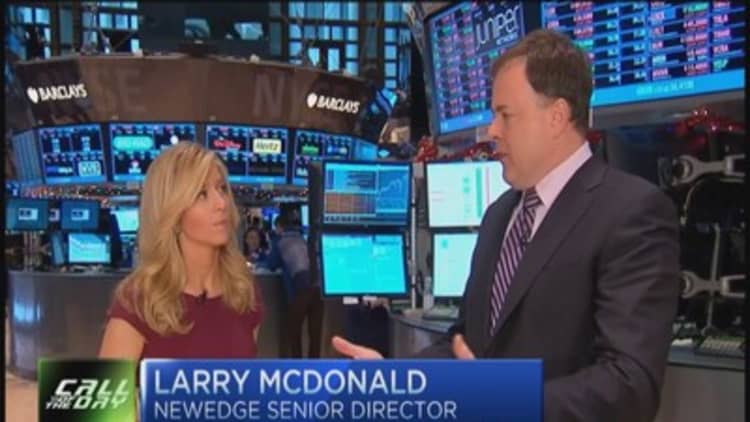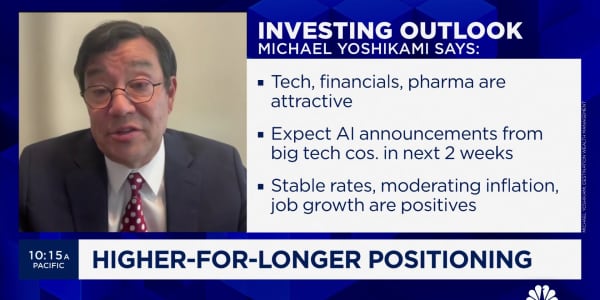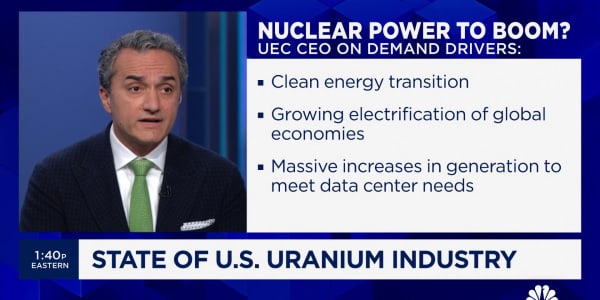Volatility and the stock market historically have made for an uneasy couple, but lately they've managed to enter into what at least could be described as a marriage of convenience.
Investing in 2014 was no easy puzzle to solve, regardless of what the major averages indicated at the end. The year featured some stomach-churning bouts of restlessness and at least three rounds of dips in the of more than 5 percent.
Along the way, the , a popular trader gauge of market fear, finished about 40 percent higher than where it started the year.
Simply stated, that's not supposed to happen. The VIX and stocks on any given day are almost always inversely correlated—one goes up, the other goes down—so to see them both get through a year substantially up is unusual.

Of course, viewing the VIX over the course of the year can be misleading.
Read MoreVolatile markets are facing the 'old normal'
A huge run at the end can distort the index's value, and a three-day losing streak to close the year made the gauge's increase look bigger an on annualized basis than what was really happening. For 2014, the VIX averaged just shy of 15, which is below its historical norm but well off its lows for the year.
The CBOE itself, however, looked at the behavior of more than a dozen volatility measures and found reason to believe that 2015 is setting up for some uneasy though not necessarily unprofitable times ahead.
Specifically, the exchange actually has an index that looks at the volatility of the VIX—the VIX of VIX index, which measures expected volatility of 30-day forward VIX prices.
Read More1999 all over again? Hold on to your hats!
Over the course of the year, the VVIX had an average price of 83, which is close to its historical trend.
However, even as equities showed their best quarter of the year in 2014's final three months, the VVIX steadily rose and stayed in territory that indicates investors are expecting a testy start to the new year.
"The 2014 average doesn't seem like a big deal, but the average for the fourth quarter of 2014 was over 97—that's a clear indication of excess nervousness in the equity markets as of late," Russell Rhoads, a senior instructor at the CBOE Options Institute, said in a report. "Well over 100 going into 2015 may be a red flag for the equity market in the new year."
That trend is consistent with Wall Street sentiment, which sees a market moving higher through the year but in for a bumpy ride getting there. Events like the mid-October market disruption, then, could be more common and result in higher readings across the various volatility gauges.
Strategist at JPMorgan Chase believe a number of factors will converge to make equity gains more challenging, not the least being continued changes in Federal Reserve policy that could see the first funds rate increase in more than six years.
Read MoreThe market's next Fed fear: The exit strategy
"In our 2014 volatility forecast, we predicted that volatility would increase in H2 2014 due to the end of the Fed's (quantitative easing) program and a turn in the rate cycle," the firm said in its 2015 outlook report. "October's shock is an example of the market volatility we are likely to see in 2015 as the Fed increases rates, and the market adjusts to lower levels of liquidity."
The JPMorgan team expects a 15 percent increase in volatility, with the VIX averaging about 16. That's part of a forecast in which the firm believes the S&P 500 will rise to 2,250 by the end of the year, implying a nearly 10 percent upside from current levels.






